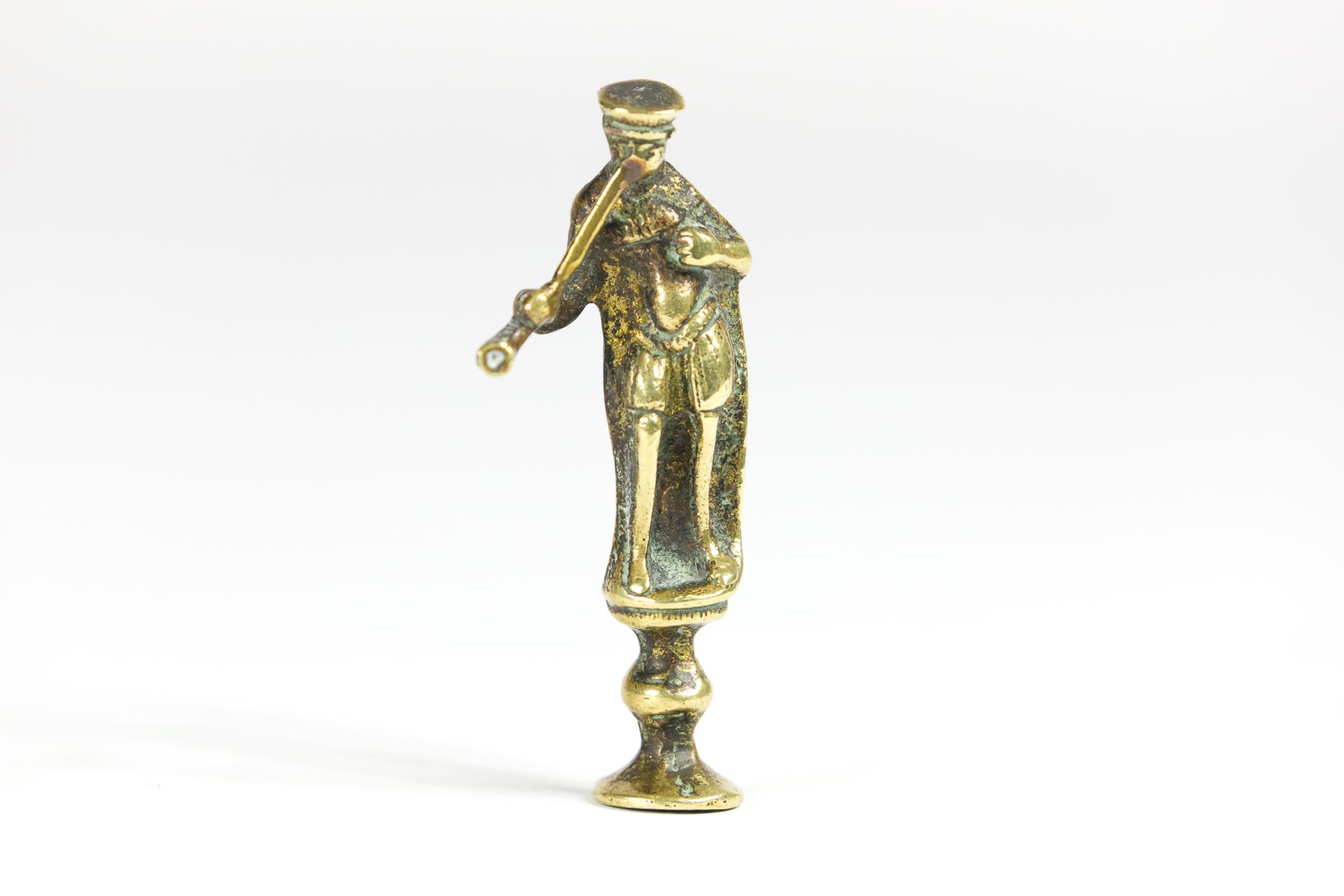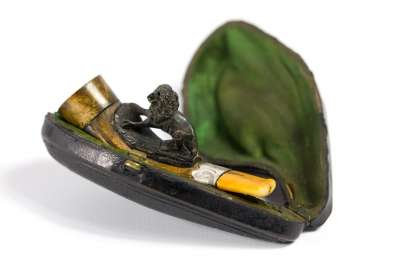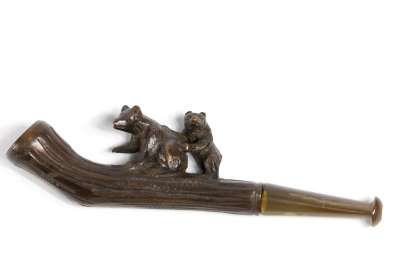This antique brass pipe tamper, dating back to circa 1850, is a unique representation of a gentleman smoking a long pipe. Crafted with meticulous attention to detail, the tamper showcases the elegance and sophistication of the mid-19th century. The maker of this piece remains unknown, but its design and style suggest origins in England. The tamper's intricate design captures the essence of the period, making it a valuable addition to any collection of antique smoking paraphernalia.
Condition Report
The pipe tamper is in good condition, with wear consistent with its age and use. The brass surface shows a natural patina that has developed over time, indicative of its historical journey. Minor surface abrasions and slight discolouration are present, which are typical for an item of this age. These features do not detract from its overall appearance or function but rather enhance its character and authenticity. The tamper has been carefully preserved, ensuring its continued integrity and usability for those who appreciate the historical significance of antique smoking accessories.
Dimensions
Weight: 35gm, Length: 3cm, Width: 3cm, Height: 6.5cm.
A Tool for the Discerning Smoker
Historically, pipe tampers were essential tools for smokers, used to compress tobacco within the bowl of a pipe to ensure an even burn. This particular tamper, with its elegant depiction of a gentleman smoking, would have served both a practical and decorative purpose. It reflects the customs and rituals of the time, where smoking was not only a pastime but also a social activity. The detailed design suggests it may have been owned by someone of status, adding a touch of sophistication to their smoking routine.
Mid-19th Century Design
The style of this pipe tamper exemplifies the design sensibilities of the mid-19th century. During this period, there was a fascination with intricate and realistic depictions in everyday objects. The gentleman's attire and the long pipe he smokes are captured with a high degree of realism, reflecting the era's artistic trends. Such detailed craftsmanship was typical of the time, aiming to combine functionality with artistry. This tamper serves as a fine example of how everyday objects were transformed into works of art during this period.
The Craft of Brass Casting
This pipe tamper was likely made using the brass casting technique, a common method employed in the 19th century for creating durable and detailed objects. Brass, an alloy of copper and zinc, was favoured for its workability and resistance to corrosion. The casting process would have involved pouring molten brass into a mould, capturing the intricate details of the design. Once cooled, the tamper would have been polished to enhance its appearance. The craftsmanship involved in creating such a piece indicates the skill and precision of artisans of the time.
Anonymous Artisan of the Era
While the exact maker of this pipe tamper is unknown, it reflects the handiwork of an accomplished 19th-century artisan. During this period, many craftsmen operated independently or as part of small workshops, producing items with a high level of skill. The quality and detail of this tamper suggest it was made by someone well-versed in the brass casting technique. Although their identity remains a mystery, the legacy of their work endures in the beauty and functionality of the piece.
Collected by Enthusiasts of Smoking History
Antique pipe tampers like this one are coveted by collectors who appreciate the history of smoking culture and the artistry involved in crafting such tools. These items offer a glimpse into the past, revealing the social customs and craftsmanship of their time. Collectors are often drawn to the detailed designs and the stories they tell about the individuals who once owned them. As a representative of 19th-century smoking accessories, this tamper holds appeal for those interested in the intersection of history, culture, and art.














